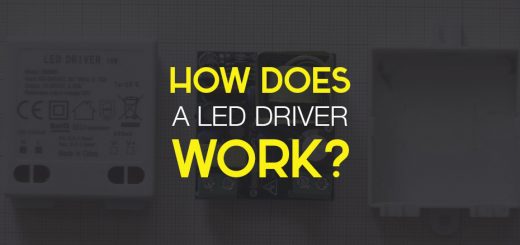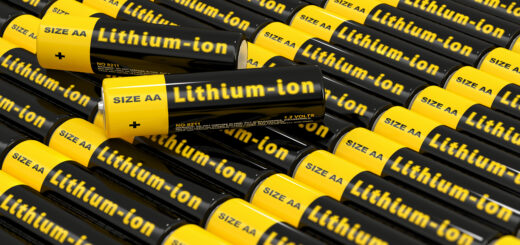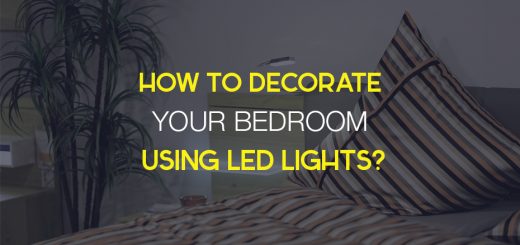Things to Know About Diffusing LEDs and Tips for How to Do It
LED lights are used all around us and for good reasons. From our computers and phones, through our residential and office lighting, all the way to ornamental and decorative lighting – LED is often the way to go.
One of the many benefits of LED lights is that they offer multiple smaller light sources in each fixture instead of one big light bulb. This can make them easier to the eye as you don’t feel like you have a mini sun at home that you can’t possibly look at. Maybe that’s why LED diffusing is not talked about that often.
Still, even LED lights can often benefit from some light diffusion. Whether in our standard lighting fixtures or for some ornamental purposes, we can often improve the look of our lights by diffusing them a bit.
How to diffuse LED lighting?
There really are three main tricks to use to diffuse light of any source, including from LEDs:
- Place a semi-transparent barrier in front of the light.
- Place some thick opaque buffer over the light.
- Increase the distance the light has to travel.
All three of these things can help diffuse the light from your LEDs and there are many examples of barriers and buffer materials you can use. If you’re wondering how to diffuse LED lights as well as possible, you’d do best to use a combination of all three methods at once.
The third point is pretty much self-explanatory – the more distance there is between the LEDs and the diffusing barrier or buffer above them, the better. The other two methods, however, can be done with various different materials and tools. Here are some examples – you can either find many of these as commercially-sold extrusions/diffusers or you can make them yourself, DIY style.
Do keep in mind, however, that the more you diffuse your lights, the dimmer they get. So, a balance will have to be struck depending on how much light and how much diffusion you need.
Barriers to use for LED light diffusion
Paper, plastic, aluminum – virtually any semi-transparent or opaque material can create an excellent barrier for your LED lights to get diffused through.
- Aluminum LED strip extrusions. One of the easiest things you can do for your LED strips is to get an aluminum opaque extrusion from the local hardware store. You’ll have to find one that’s the right size and length for your LED strips but that should be relatively easy.
Most such aluminum extrusions have either flat or curved diffuser screens. The depths of said screens can vary, usually between 10mm and 17mm. Curved and higher screens will offer more diffusers while lower flat ones – less. Which you choose is up to how much diffusion you want. - Good ol’ paper. Something as simple as a white printer paper can make for an excellent light diffuser. It’s affordable and it’s easily malleable into whatever shape you want. With very minimal DIY efforts you can create an excellent paper diffuser screen for any LED light fixture.
You can use commercial frames for the lights that you’ve removed the glass from or you can insert pieces of paper behind the glass covers of said frames. Or, you can make your own “diffuser frames” from cardboard, wood, plastic, metal, or whatever you like. - Fabrics. Standard woven fabrics are flat, non-stretchy, and offer excellent diffusion for LED lights. They are even easier to work with than paper and are more durable. You can use them to diffuse both ceiling light fixtures and decorative lights.
Knit fabrics, on the other hand, offer a whole different type of diffusion. Depending on their knitting they can be used for some spectacular decorative diffusion but they’re not a good choice for standard lighting fixtures. - Glass. We’re used to thinking of glass as something 100% transparent because most of the glass items around us are meant to act this way. Glass can have some pretty nice diffusing properties, however, and is often used in lighting fixtures. Whether it’s by being slightly colored or simply thick, it can diffuse LED lights to a varying degree, depending on your preferences.
- Acrylic, plastic, rubber, and other opaque materials. Really, you can use any semi-transparent surface as a light diffuser. One very easy and simple example is ping pong balls – just cut a part of them for the LED lights and place the balls on top of them. Similarly, you can use any other plastic or acrylic material for light diffusion.
- Thermoplastic, glue, or other adhesives. For something even more interesting you can use glue or thermoplastic. The type of glue you use will make a difference but anything malleable and transparent can make for a great light diffuser once it sets and solidifies.
Buffers to use for LED light diffusion
Once you’ve placed your diffusing barrier of choice you may find that you need even more diffusion. If increasing the distance or opting for a more opaque barrier is not an option, you can try adding some waddle between the diffusing barrier and the LEDs.
Essentially, we can call this “double diffusion”. You can use virtually anything for that – various fabrics, cotton pieces, an inner barrier of paper, glue or something similar, and so on. Anything that obstructs and breaks the light but still lets enough of it pass through will act as an effective diffuser.
Whether you’re wondering how to diffuse LED light strips or regular LED lighting fixtures, any of these methods should work. Depending on the type of light you have you may not be able to find a good commercial option, but as you can see, DIY light diffusion is relatively simple. Just make sure not to dim the lights too much and always remember to turn the lights off from the breaker before you work on them.



